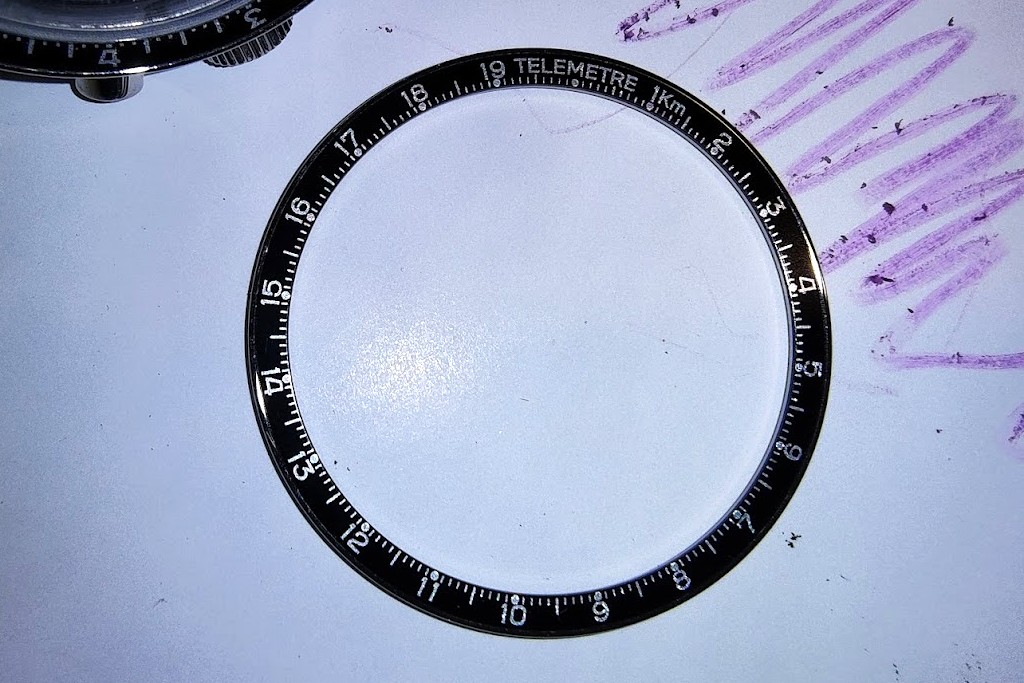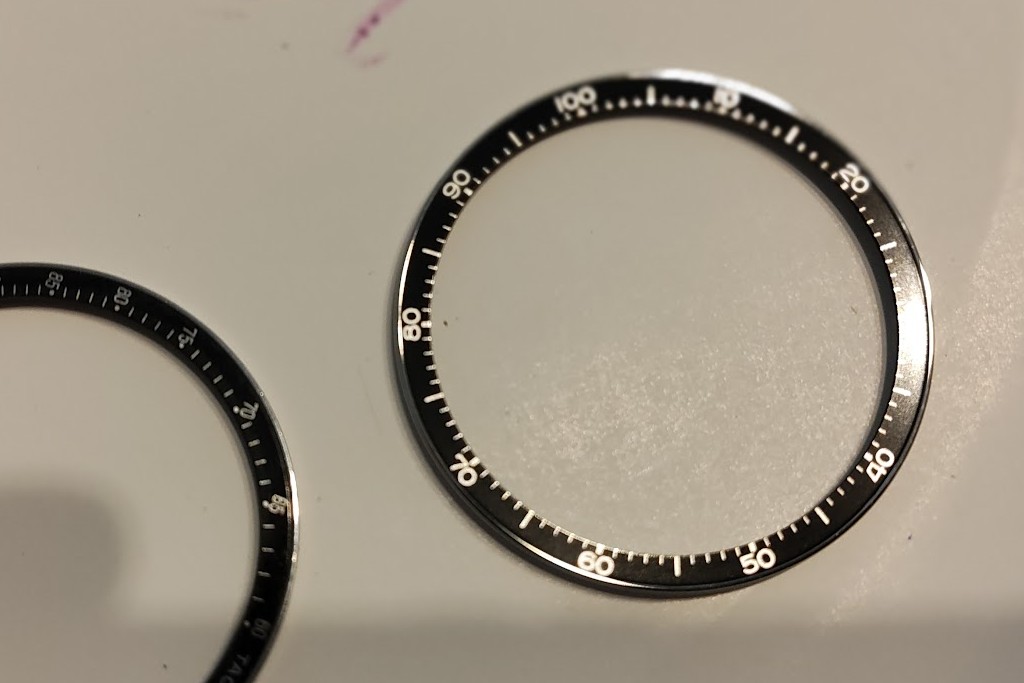The tachymeter bezel has become ubiquitous on sports chronographs, and we have the Omega Speedmaster to thank for that. It looks cool, but its real-life utility is, well, limited. How often are we timing how long it takes for something to happen exactly once, and then quickly extrapolating the corresponding hourly rate? Maybe you’d like a more practical Omega Speedmaster bezel, like one with a pulsometer scale–or one that allows you to tell how far away lightning is. Omega offered all of these on old Speedmasters, as well as a bezel simply marked in 1/100ths. In this article we’ll take a quick look at all five Omega Speedmaster bezel scale options.
Omega stopped offering these bezels on new watches long, long ago–145.022 was the final Speedy reference to have these options–but service parts can be found online. This Omega Forums thread has some good pics showing how to spot the difference between original alternative Speedmaster bezels and service replacement ones. Obviously originals are worth more, but even service replacement versions of these bezels can sell for $1,000 apiece. Let’s take a look at each Omega Speedmaster bezel type.
Tachymeter Bezel
Tachymeter bezels have been standard for the Omega Speedmaster since its inception. To use a tachymeter, you start the chronograph when an event begins (like peeling a banana) and stop it when something is complete (like you’re done eating the banana). If it took you just over 41 seconds to eat that banana, for instance, the chronograph seconds hand will clearly indicate that you’re eating at a rate of 87 bananas per hour, as you can see below:
The “unit” can be anything. The tachymeter bezel only works for events that take a minute or less, though. For things that take longer you’d need a “snail” tachymeter scale on the dial, like the latest Tudor Pro Cycling watch has.
What is a Dot Over Ninety Bezel?
A “dot over 90 bezel,” sometimes just called a “DON bezel” by watch geeks, is what it sounds like. It’s a tachymeter bezel for a Speedmaster with a dot over the 90. The dot moved “next to the 90” sometime around 1969, and if your vintage Speedmaster needs a replacement bezel, that’s what it will get. So the “dot over 90” generally signifies a Speedmaster from the 1960’s or earlier with an original bezel.
Honestly, there’s nothing wrong with the dot being next to the 90; that looks perfectly fine too. It’s just something to be aware of if you’re venturing into the world of high-end vintage Omega Speedmasters. My old Speedy doesn’t have the DON bezel, but that’s fine because I didn’t pay DON prices for it.
Telemeter Bezel
Telemeter scales on watches have a rather horrific history: they first got popular during World War 1 when soldiers wanted to calculate how far away mortar fire was. Telemeters work by exploiting the delta between the speeds of light and sound. Activate the chronograph when you see something (like a flash of mortar fire or lightning); stop the chronograph when you hear its corresponding sound. The chronograph seconds hand will be indicating how far away the flash was. Pretty neat! But unlike on a tachymeter, the units are predefined, so Omega needed to make two versions of the telemeter bezel–one measured in miles and one measured in kilometers.
Miles
The 105.012 shown above has a telemeter bezel measured in miles. This is a service replacement part; original telemeter bezels have a slightly thinner typeface. Funnily enough, for the “miles” versions, they spell “telemeter” the American way.
Kilometers
Meanwhile, telemeter bezels marked in kilometers are spelled “telemetre” instead:
Pulsometer Bezel
Pulsometer scales are sometimes found on watch dials, and less often they can be seen on bezels, too. To use it, just start the chronograph when you start counting someone’s heartbeat, and stop it when you’ve heard 15 beats. The chrono hand will point to the heartrate. Simple.
It’s worth noting that original Omega Speedmaster pulse bezels have hash marks for each individual number from 40-80, but later replacements don’t.
Decimal Bezel
You may be wondering why a bezel would simply be marked in 1/100ths, because, well, who’s measuring 1/100ths of a minute? There are actually some perfectly valid reasons to do so. When planning operational logistics, for instance, it’s much easier to do math with numbers like “3.80 minutes” than “3 minutes and 48 seconds.” But the truly important thing, obviously, is that the decimal bezel looks really cool.
Omega Speedmaster Bezel Alternatives: Any Chance of a Comeback?
Personally I think it would be awesome if these alternative Omega Speedmaster bezels were offered again, but I won’t get my hopes up. I get that Omega probably doesn’t want to mess with the “signature look” of their tachymeter bezel, but the Rolex Daytona (and countless other watches) have already been copying that for over half of a century at this point. A decimal bezel would look pretty sweet on Daniel Craig’s white Speedmaster. What’s your favorite Omega Speedmaster bezel?
More on the Omega Speedmaster:
12 Omega Speedmaster Alternatives
What is the Price of an Omega Speedmaster?
5 Underrated Omega Speedmaster Models
The Omega Snoopy: A Collector’s Guide








